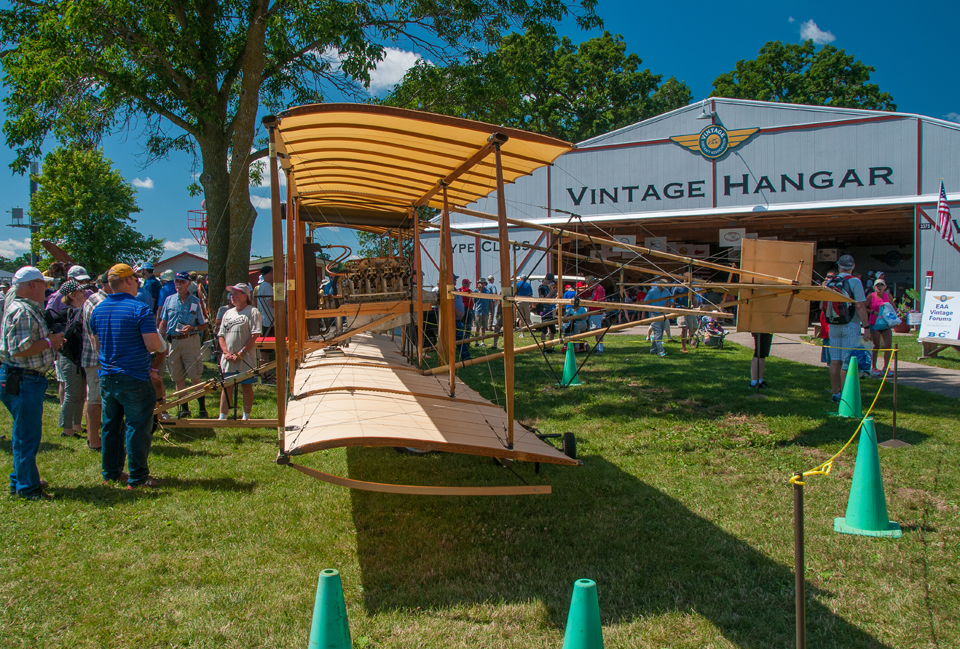Kitbuilt, 1909 Style
Plans are to fly the nearly original craft
By Randy Dufault
July 25, 2016 - When a museum curator came across a collection of wooden and metal components in an attic in Beverly, Massachusetts, he only knew one thing: They did not belong to any piece of furniture he had ever seen. However, he was aware of some history and legends of the Sturdevant family that had owned the home in 1915 when the parts were carefully wrapped in newspaper and stored. Based on that knowledge, he had an inkling that they may have been part of an airplane.
Two separate experts were contacted, and after examining the collection, both came to the conclusion that they were never-used parts for a Curtiss Model D Pusher — specifically a 1909 Model D.
EAA member William Nutt acquired the parts and set off to have them restored into a working, flying airplane.
Century Aviation of East Wenatchee, Washington, one of the experts called in to initially identify the parts, took on the restoration effort.
“We’ve built it exactly to the way it would have been in 1909,” said Mark Smith of Century Aviation.
“The cotton fabric is of the type they would have used. It is all nailed on, and the finish is two coats of shellac, which is what they used at that time. All the wires are exactly the way they would have done it.”
According to Nutt three significant components were missing. First and foremost was the Curtiss-built, V-8 OX engine. The second was the radiator, and the third was the propeller. Ultimately an engine was located in Pennsylvania, drawings for a radiator were derived from period photographs, and the Curtiss Museum provided original dimensions for the propeller.
Restoration took two years to complete and was finished in December of 2015.
Plans are to eventually fly the completed craft.
“The plane is going to fly,” Smith said. “We’ve done all the taxi tests, high-speed tests, and we’ve got about five hours on the engine.
“Now it’s just a matter of working with the FAA to get through the experimental certification.”
Smith indicated that the fact that there are no original drawings or any other engineering for the design is making the process difficult.
How the parts ended up in the attic is still somewhat of a mystery. However, Nutt did hear one story that seems very plausible.
“A young Sturdevant who at 19 years of age flunked out of, or had a medical problem and dropped out of, Harvard,” he said. “His father sent him to France where he met Glenn Curtiss at Reims.
“He came back and bought a Curtiss Pusher [kit] from Glenn Curtiss. He started to put it together and never completed it. So he rolled up the parts in 1915 newspaper.
“The world of aviation was advancing so quickly that that if you had completed a 1909 in 1915 you would have had [a very obsolete] model.”
The Pusher is on display just outside the VAA Red Barn. The darker-colored wood components are the original parts.

